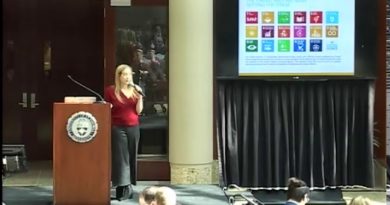Can the Commission Declare a Measure Compatible without Deciding whether it Forms State Aid? C‑40/23 P Netherlands v. Commission
Introduction
This judgment
Facts of the Case
The case concerns a draft law of the Dutch Government aimed at reducing CO2 emissions in the Netherlands and providing for compensation for the damage caused to a coal-fired power plant disproportionately affected by the ban on the use of coal for electricity production compared to other plants of the same type. The Netherlands notified the draft law under Directive (EU) 2015/1535
The Netherlands subsequently adopted the law and granted Vattenfall NV, which operates one of five coal-fired power plants in the Netherlands, €52.5 million in compensation. According to the Netherlands, the compensation, being determined by independent experts, was calculated in accordance with the approach described in Dutch case law.
In its decision of 12 May 2020
The Netherlands appealed against the decision, arguing, inter alia, that the EC lacked the competence to declare a measure compatible with the internal market under Article 107(3) TFEU without first classifying it as aid.
In its judgment of 16 November 2022
Judgment of the Court of Justice
In its appeal, the EC essentially argued that the GC erred in finding that Article 107(3) TFEU and Article 4(3) of Regulation 2015/1589
In its appeal, the EC argued that the GC’s literal interpretation of Article 107(3) TFEU is overly restrictive and that the term ‘aid’ is used in its general sense, not in the technical sense to denote State aid. However, the ECJ disagreed, stating that the term ‘aid’ in Article 107(3) TFEU is used to designate only State aid (para 35).
The EC’s criticisms of the GC’s references to the ECJ’s judgments in British Aggregates
As regards the EC’s reference to Article 4(6) of Regulation 2015/1589 (providing for, in short, automatic compatibility if the EC does not decide on a notified measure in time), the ECJ noted that that provision aims to remedy failure on the part of the EC to exercise its decision-making power but cannot form the basis for the EC’s power to decide that a measure which it has not classified as State aid is compatible (para 45). The ECJ further held that the reference of Article 6(1) of Regulation 2015/1589 to a ‘preliminary assessment’ does not mean that the EC may terminate the preliminary examination without classifying the measure as State aid (para 46).
In conclusion, the ECJ rejected the EC’s assertion that there are situations in which it is more appropriate to determine whether the measure is compatible with the internal market than to determine whether it constitutes aid. The ECJ held that such considerations cannot call into question the scheme and consistency of Article 107 TFEU and rejected the EC’s appeal.
Comments
It is quite common for the EC to use the phrase “cannot exclude” in decisions closing preliminary proceedings. The EC often uses this language in connection with the criterion “may affect inter-state trade” as it is not necessary to show that interstate trade is actually affected, but that a potential effect is sufficient. Therefore, “cannot exclude” that interstate trade is affected means that it is capable of being affected. In fact, this may be a definitive assessment in relation to the ‘interstate trade’ criterion. However, if a Member State – or a beneficiary – disputes that trade is capable of being affected, the EC must further substantiate the “cannot exclude”.
If the EC does not reach a final conclusion on the other criteria of Article 107(1) TFEU, such as the ‘advantage’ criterion, the situation is significantly different in the light of this new ECJ judgment. It is clear from this judgment that the EC must initiate the formal investigation procedure if it has doubts on such an issue. Therefore, a pragmatic approach of leaving the qualification of the measure as state aid in the middle while giving a decision on its compatibility is, strictly speaking, contrary to the ECJ’s judgment. Therefore, in my view, this pragmatic approach is only conceivable if the Member State concerned has notified the aid measure and explicitly stated that it does not dispute the aid character of the measure. But even then, the interest of the beneficiary has to be taken into account. A beneficiary may have an interest in having a particular measure declared not to constitute aid, for instance if it receives (other) aid and the new aid measure could exceed the maximum aid intensity or the thresholds. A beneficiary could therefore appeal against the decision, although this may not occur frequently.
Furthermore, a problem could arise if a third party (e.g. a competitor of the beneficiary) disagrees with the EC’s decision that the aid is compatible. While it may be rather peculiar for a competitor to argue that the EC should have opened a formal investigation because it should have had doubts as to whether the measure in question qualified as State aid, this judgment does indeed indicate that the EC must open the formal investigation procedure if, at the end of the preliminary investigation, it has not obtained certainty as to one of the elements of the concept of aid.
Thus, there seems to be room left for a pragmatic approach only if neither the notifying Member State nor the beneficiary disputes the State aid character of the notified measure and, moreover, there is no reason to believe that there is an interested third party that could invoke its rights under Article 108(2) TFEU.






